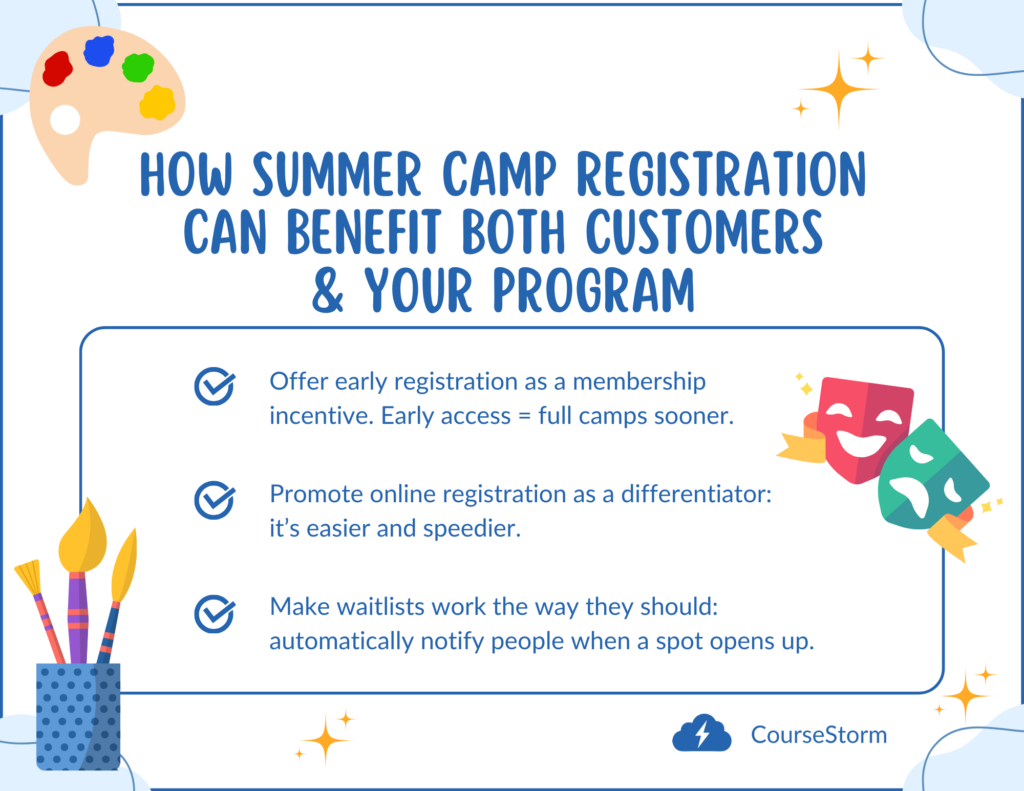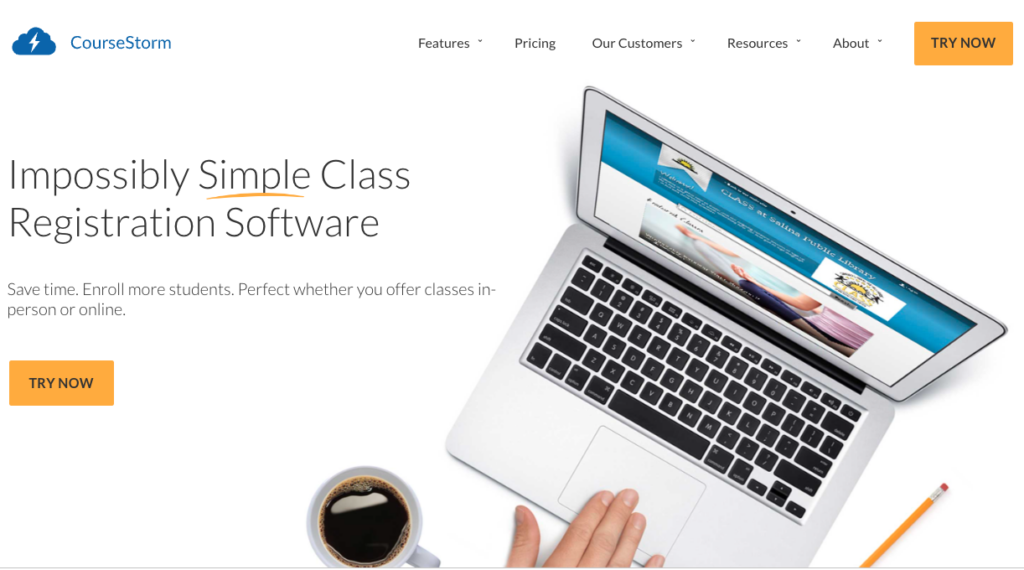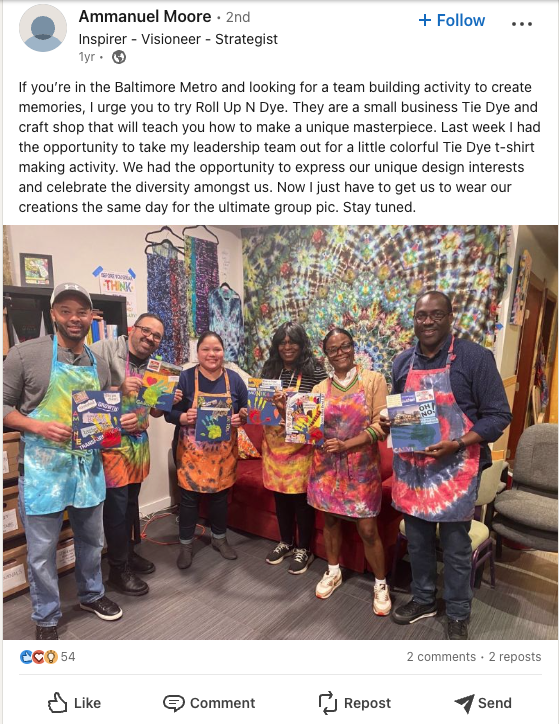Run a summer arts camp? Here’s how to set your program up for success this season
Leave a CommentSummer arts camps tend to be in high demand for kids and parents alike. If you’re part of a children’s theater, arts organization, or community college that runs one of these camps, you’re almost certainly juggling multiple projects and programs. But thinking ahead can help make summer camp registration season a breeze for you and your customers.
How you handle summer camp registration can have a big impact on your staff and on whether you fill your camps with satisfied, returning customers year after year. Now’s the time to set your arts camp up for success next year. Registration season will be here again before you know it!
The unique challenge of summer arts camps
Many arts organizations run programs all year round. These could be weekly classes, afterschool enrichment programs, or other types of educational offerings. You most likely take registrations for these programs on a rolling basis.
Summer camps require a different registration process than other classes. Parents may be signing up multiple children months in advance and competing for limited spots. There also tends to be more paperwork involved.
Parents want to make sure they have summer childcare and activities taken care of. That’s part of why camp registration usually starts months in advance. Time is of the essence since the demand is often greater than the number of available spots. After all, an arts camp may have only so many pottery wheels or 3D printers.
Camps also tend to require more involved paperwork than an hour-long class—such as medical forms, emergency contacts, supply lists, etc. All of these factors mean that it’s critical to have a flexible registration system that meets your needs and the needs of your customers.
What streamlined registration can do for both customers and your arts program
From our years of serving organizations that offer theater camps, art classes for kids, and summer arts camps, we know that summer camp registration season can be hectic. Organizations want features that streamline the process, both for their customers and for their administrative team.
The right summer camp registration software delivers three valuable benefits to help you fill spots with less hassle. Here are three ways you can use quality software to streamline the registration process and support your whole program.

Offering early registration as a membership incentive
Many community theaters and arts organizations offer memberships or sponsorship programs. In exchange for an annual donation, members get certain benefits, such as discounts and early access to purchase tickets or register for classes.
Let people know that becoming a member will let them jump the line and register early for your in-demand summer arts program that fills up every year. You could even offer a discounted tuition rate for members and their families.
CourseStorm class registration software includes custom promo codes so you can easily configure and share discounts with members.
Perks for customers: Early access to summer camp registration; discounted tuition
Perks for programs: New memberships and full summer camp programs
User accounts simplify registration for returning campers
Online registration is more than a convenience, it keeps families coming back year-after-year as
Laramie County Community College (LCCC) in Wyoming learned first-hand. They run several week-long summer youth programs on campus, everything from arts camps to sports and fitness programs. These summer camps are so popular that most completely fill within the first 6 hours on the day registration opens. “Some classes fill within the first 5 minutes,” said program manager Christie Goertel.
Make it easy for parents to cross register the kids for summer camp off their to-do list.
Because LCCC uses CourseStorm to take online registrations, returning customers have a major advantage. They have already created an account with all of their child’s info included from last time, and they may have even saved their credit card in the system. That cuts down on paperwork and helps parents finish registration faster.
“Theoretically, if there’s a returning parent and they know what camps they want and they’ve done it before, they may be done in less than 4 minutes,” said Goertel. Don’t underestimate the motivation of a parent crossing “summer camp registration” off their to-do list in March!
Perks for customers: Ease and speed of summer camp registration
Perks for programs: Eases administrative burden; supports long-term relationships with campers’ families
Making waitlists work the way they should
Again, you may be thinking of camp waiting lists as a necessary administrative detail or even a deterrent to customers. After all, why would a parent add their name to a waiting list when these lists are often black holes? We can all think of a time we gave our name to someone over the phone while waiting for a coveted appointment slot or other opening, only to never hear from them again.
This is where an automated waiting list can make all the difference. With CourseStorm, for example, customers trying to register for a class or camp session that’s already full will be prompted to add their name to the waitlist.
Then, if a spot opens up, CourseStorm users can choose to send people on the waitlist an automatic email that expires after a certain amount of time. The person on the waiting list can either click to register immediately, or decline the invite, which passes to the next person on the list.
Either way, it’s a great way to show customers that you haven’t forgotten about them. And it gives them hope that maybe they will get a desired spot in a popular camp or class.
Perks for customers: Better experience that can encourage more registrations
Perks for programs: Eases administrative burden by automating the entire waitlist process
Make summer arts camp registration simple
Setting up membership discounts, user accounts, and waitlist systems now can turn summer camp registration season from a nightmare to a dream. Start now to make sure everything is in place when sign-ups open.
For more tips on optimizing the sign-up process for your summer arts camp, see our post on The Best Summer Camp Registration Software for Nonprofits.











